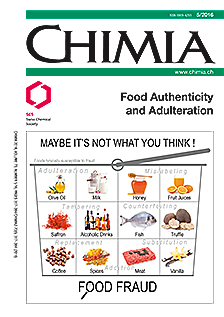Lactic Acid Bacteria as Markers for the Authentication of Swiss Cheeses
DOI:
https://doi.org/10.2533/chimia.2016.349Keywords:
Authentication, Cheese, Lactic acid bacteria, Proof-of-originAbstract
The manufacture of traditional Swiss-type cheeses adheres to strict rules, so as to guarantee quality and purity of the end product. This raises production costs and means consumers pay more. It also opens the door to cut-rate forgeries claiming to be made to the stringent standards and causing considerable economic losses to the entire dairy sector. In order to combat product counterfeiting, Agroscope has developed proof-of-origin cultures that allow the identification of copycats. Carefully selected lactic acid bacteria, having uniquely located insertion sequence elements, are proliferated by fermentation and subsequently dried by lyophilization. The proof-of-origin culture is added during the cheese production process and sustains maturation. These so-called 'biological markers' can be traced using polymerase chain reaction (PCR) methods, which allow authentication even if the cheese is cut into pieces or grated. They do not lead to any alteration of the cheese's taste or texture, and are compatible with the strict 'protected designation of origin' (PDO) specifications. The proof-of-origin cultures are used for the protection of several traditional Swiss-cheese varieties, such as Emmental PDO, Tête de Moine PDO, and Appenzeller®. A market survey of Emmental PDO showed that the system is effective in revealing fraud and has the power to enforce corrective measures.Downloads
Published
2016-05-25
Issue
Section
Scientific Articles
License
Copyright (c) 2016 Swiss Chemical Society

This work is licensed under a Creative Commons Attribution-NonCommercial 4.0 International License.
How to Cite
[1]
P. Lüdin, U. von Ah, D. Rollier, A. Roetschi, E. Eugster, Chimia 2016, 70, 349, DOI: 10.2533/chimia.2016.349.







